Song and Spirit
Meditation from keynote speech, Lost Chord Award Banquet, January 23, 2016
Diana L. Paxson

Open the eyes of your spirit and see
how it was in the morning of the world–
mountain and forest, marsh and plain,
icefield and desert and the shore of the sea.
Fill your lungs with the icy breath of the glacier,
the aromatic incense of the forest,
the rich reek of a swamp,
the spice of dusty grass.
See our first ancestors moving through this young world,
a world they share with creatures more powerful than men.
Is that movement a spirit or a shadow?
Was that branch stirred by a being, or the wind?
The land is alive with mysteries,
peopled by unseen Powers.
Only by learning their patterns and their harmonies
can the first humans survive.
In the deep caves that are the womb of the Goddess
they capture the spirits of the beings
with whom they share the world.
You have seen those paintings.
Millennia have passed, but they still have power.
Now open your inner ears, and hear. . .
Music is everywhere—
In the rhythmic knocking of a branch stirred by the wind,
in the songs of birds and the sighing of the sea.
In the Paleolithic they made flutes from bone,
whose trilling lifts the spirit.
The pulse throbs to the beat of the drum.
By the Neolithic, the harp soothes with sweet sound.
Our spirits know that music!
Bodies move in rhythm, sound makes meaning.
Music wakes that ancestral memory,
a response embedded in our blood and bones.
Music patterns mind, mind makes words.
With sound comes song,
songs that the spirits gave, dream songs, lullabies.
And from song comes story, making sense of the world.
Children who play freely create songs and stories,
altars and rituals and charms.
Story births ritual, ritual, drama,
a language that speaks to the heart.
The sense of ceremony is wired into our brains.
Remember the old tales of folk and faerie,
the knight and the dragon, the princess and the seventh son,
elves and gods, dwarves and trolls and giants,
witch and wizard and wildman,
berserk and bard.
Suppressed and forgotten,
from the depths of the unconscious they return.
In childhood these tales wake our sense of wonder.
As adults we succumb to the magic once more,
recalled and reconstructed in tales of hobbits and elves,
spaceships and superheroes.
On the screen, they move millions,
in the intimate communion of the stage
a bard can kindle magic heart to heart.
Each new generation shapes them into stories—
pity, terror, arousal, laughter, instruct, excite, amuse.
But above all, by imposing structure,
story, song and ritual reveal meaning
in the chaos of our days.
And what is the truth for which we strive in song and story?
What is the promise that ritual proclaims?
Search your memories for a moment
when you were struck speechless by beauty—
a sunset, moonlight on water, the flight of birds. . .
a painting, music, bodies in linked motion. . .
Why are our minds made to respond to beauty,
our souls shaped to create it,
if not to remind us of the reality
beneath the surface chaos of the world?
And so we hail the dancers and artists,
the tellers of tales and the makers of music,
shaman and priestess and child.
Hail to the gods and goddesses,
To the Spirits of the land and sea,
The croplands and the wild.
Hail to beauty, and to those
Who help us to see it in the world.
Diana Paxson Bio
 A prolific novelist and short-story writer first published in 1976, Diana L. Paxson is best known for two fantasy book collections. The Chronicles of Westria tells the story of a future Northern California, centuries after a cataclysm swept away modern industrial society. The Avalon series, which she continued after the late Marion Zimmer Bradley’s novel Mists of Avalon, re-imagines the Arthurian legends from the point of view of the women behind the throne. Active in the Paganism and Heathenism community, she founded the Fellowship of the Spiral Path in 1986, is an Elder in the Troth and the Covenant of the Goddess, and edits the Troth’s journal, Idunna. In 1966, Diana organized a medieval tournament that later grew into the Society for Creative Anachronism. She lives with her family in Berkeley, California.
A prolific novelist and short-story writer first published in 1976, Diana L. Paxson is best known for two fantasy book collections. The Chronicles of Westria tells the story of a future Northern California, centuries after a cataclysm swept away modern industrial society. The Avalon series, which she continued after the late Marion Zimmer Bradley’s novel Mists of Avalon, re-imagines the Arthurian legends from the point of view of the women behind the throne. Active in the Paganism and Heathenism community, she founded the Fellowship of the Spiral Path in 1986, is an Elder in the Troth and the Covenant of the Goddess, and edits the Troth’s journal, Idunna. In 1966, Diana organized a medieval tournament that later grew into the Society for Creative Anachronism. She lives with her family in Berkeley, California.

 Previous Post
Previous Post Next Post
Next Post